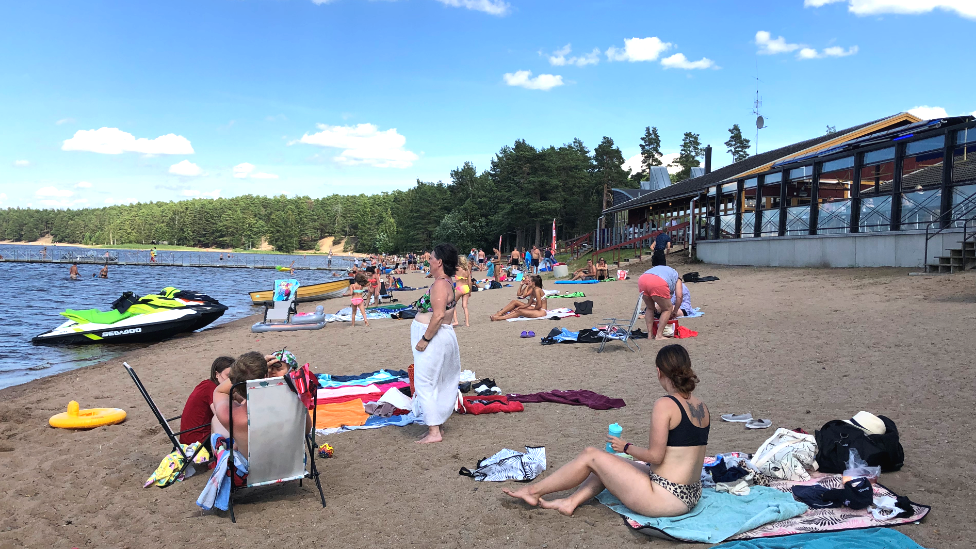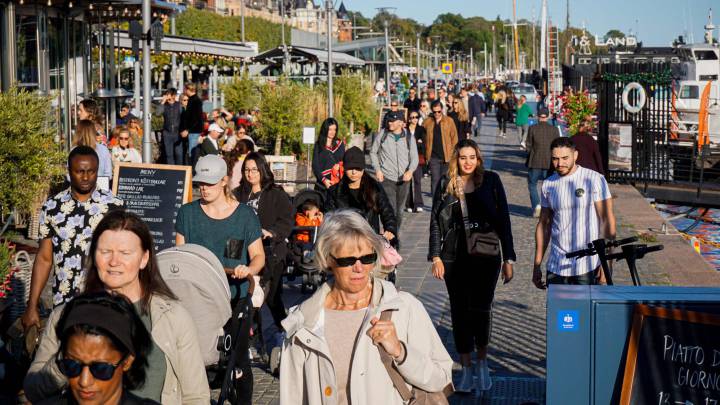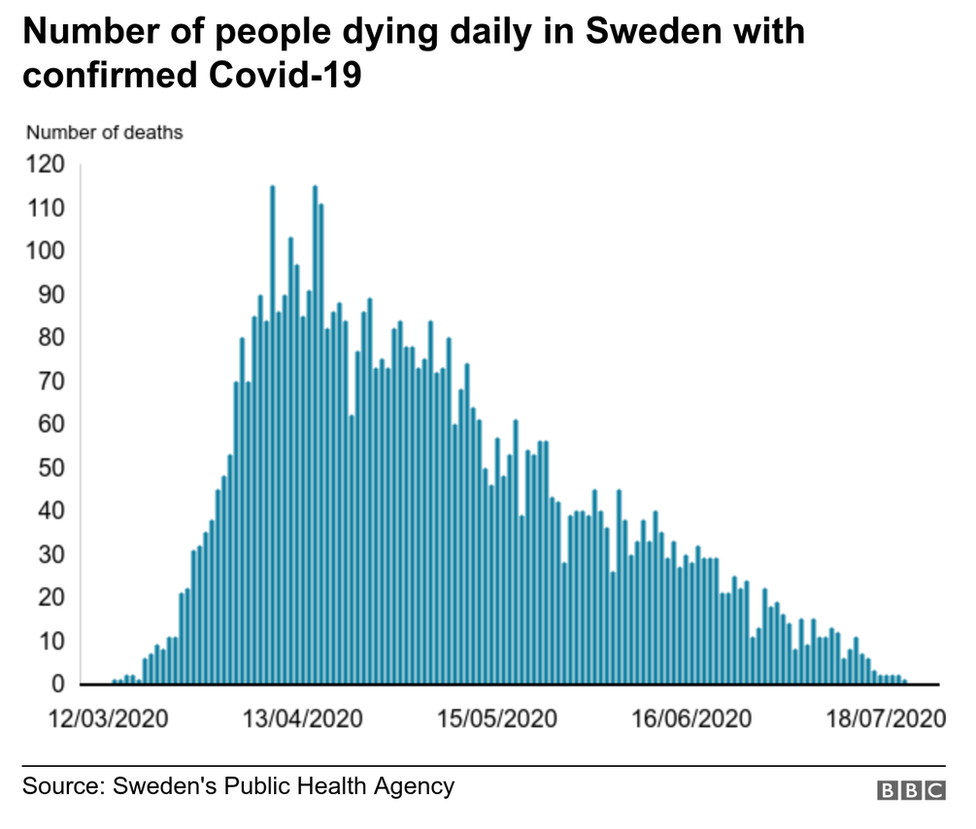Sweden's Strategic COVID Shift
| Anders Tegnell, Sweden’s state epidemiologist TT News Agency/AFP |
"We are thinking of fairly short restrictions. To break the spread of infection requires perhaps two to three weeks at most.""We are still developing the concept, so to say, but something like that.""The restrictions could be extremely local. It could be about a single workplace or city district; wherever you see a spread and think that there are restrictions that might stop it.""We have seen in
Sweden that this has a tendency to hit socially vulnerable areas. That's why I was a bit doubtful about limiting people's movement, because you need to find restrictions which will be accepted by the group you are working with and which work in more ways than just infection control.""But I think this will be easier if we are extremely clear that this is only going to apply for a short period."Anders Tegnell, State epidemiologist, Public Health Agency of Sweden
 |
| People walking in Stockholm, where there are no restrictions on leaving the house, unlike most of the rest of Europe. Photo: Fredrik Sandberg/TT |
Bjorn Eriksson, Stockholm's health chief, gave warning the city was seeing "worrying signs of increasing infection". Not to worry, he was engaged in talks with the Public Health Agency respecting bringing in local restrictions which might include imposing quarantine on families where one member might be infected. This, where at the present time those people who may share a household with one among them testing positive for coronavirus still are advised to go on with life as normal, attendance at school and the workplace.
Famously, it was Dr.Tegnell who devised Sweden's response to the arrival of the global pandemic. Advising his countrymen and women to simply proceed as normal. Depending on the population to make their own usefully protective choices. No requirement issued by the state to wear masks or to socially isolate, or to go into isolation for an inconvenient two-week period should they exhibit symptoms of COVID-19, or test positive for the virus. So people did just that; photographs out of Sweden showed people assembling as usual in groups, no masks in sight, schools open, workplaces undisturbed.

Some might impute to the scheme a total disregard for the health and safety and survival of the most vulnerable in society, the elderly and the health- and immune-impaired. They too should exercise common sense and take steps to protect themselves by whatever means, if they are at all concerned about acquiring the disease. Sweden's decision ran completely counter to its neighbours' precautionary advice and the kind of lockdown process seen there in an effort to control the situation and stem the tide of infections. Sweden had a mind to protect its economy and its trade.
Of course, most of its trade takes place with its neighbours. In lockdown and with closed borders. So much for trade. So much, for that matter, of the vulnerable in Sweden, they did indeed die in droves. To the extent that Dr.Tegnell's confidence was somewhat shaken at the price his country paid for defiance of world trends in shuttering against COVID. He mused that perhaps, in hindsight he might have done things somewhat differently ...
But then, after the first wave with its massive death toll, as compared to the more moderate toll taken on its neighbours' citizens, the situation reversed. Sweden's case and fatality toll levelled then decreased, while their neighbours' increased and Sweden felt justified in going it alone. Right now, however, Dr.Tegnell is prepared to recommend lockdown measures. Which would include school closures and strict limits to the size of groups, as long as these are local situations, measures responding to local occurrences. Which makes sense.

March may have seen no lockdown in Sweden, but after its fallen infection level, held to be the highest of any country in the European Union by mid-May, it now revels in being one of the lowest-infection countries in Europe today. Determination to maintain that low-infection level has led to the decision to reverse course and mandate lock-down in specific areas, as and when required. According to Dr.Tegnell it is of utmost importance that local restrictions be thought through, planned for specific areas.
"We have seen in Sweden that this has a tendency to hit socially vulnerable areas", he commented, pointing to Spain and the Netherlands, where resistance form the populace had resulted from hugely unpopular local restrictions. In Sweden, unlike most other countries, one does not wish to upset residents by imposing restrictions unnecessarily. Allow the epidemic to take its course and with it the lives of the immune-suppressed and elderly -- for those who survive demonstrate that they are fit to.

Labels: Anders Tegnell, Lockdown, Novel Coronavirus, Novel Coronavirus Cases, Sweden


<< Home